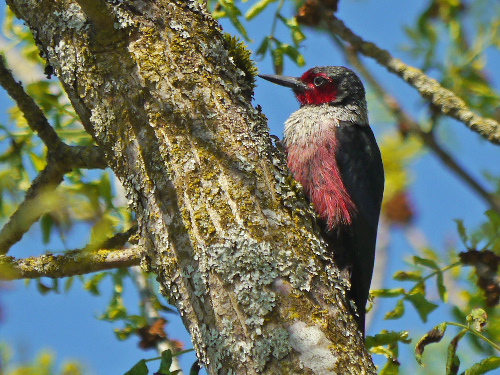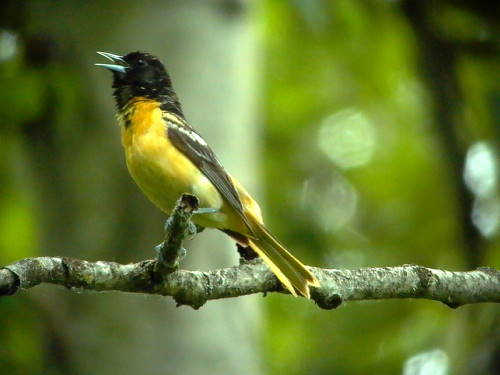May |
What to see in June? |
Jul |
|
| Week 23 | Week 24 | Week 25 | Week 26 |
June is the peak of breeding season at Marymoor. Most of the birds we see in the park in June are nesting in or near the park, while the number of rarities drops off sharply from the April/May highs.
Look for the late arrivals – Red-eyed Vireo singing in the Big Cottonwood Forest and the brilliant blue Lazuli Bunting. Swainson’s Thrushes should be singing their ethereal, rising, flute-like song. And Willow Flycatchers can be heard with their sneezy “fitz-bew” song.
Band-tailed Pigeons are often seen in groups of 2-20, flying around until they land in the top of a tree.
On overcast days, watch for Black Swifts flying overhead in long glides, with their arced, pointed wings. They are often high over the dog meadow or over the boardwalk. Black Swifts nest behind waterfalls in the Cascades, but come down to Marymoor to feed, if clouds cover their nesting areas.
Purple Martins may be nesting in the gourd nests at the lake platform. They also nest in the northeast corner of Lake Sammamish, out of sight from the trail.
And June is a time for juveniles. Look for adults feeding their young. Nearly 50 species of bird have been documented to breed in the park. There may be as many as five species of duckling in the slough. Four species of woodpecker are regular breeders, usually in snags.
Rarities have included Brown Pelican, Whimbrel, Bonaparte’s Gull, Common Nighthawk, Lewis’s Woodpecker, Olive-sided Flycatcher, Least Flycatcher, Hammond’s Flycatcher, Ash-throated Flycatcher, Eastern Kingbird, MacGillivray’s Warbler, Chipping and Brewer’s Sparrows. A Baltimore Oriole thrilled viewers for a week in 2006.
|
|
|

